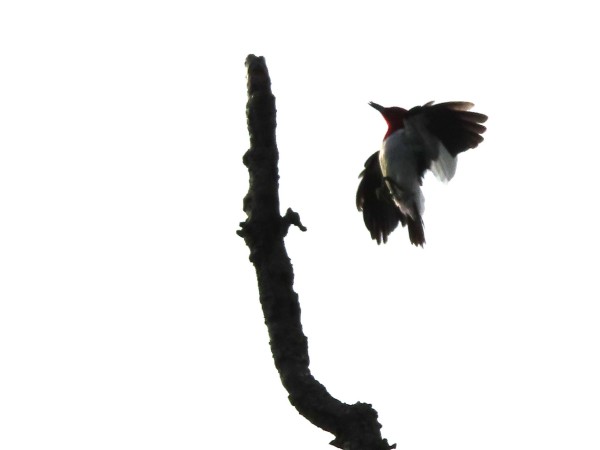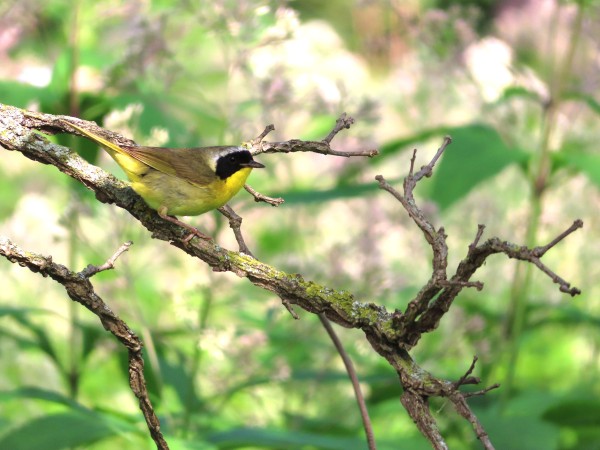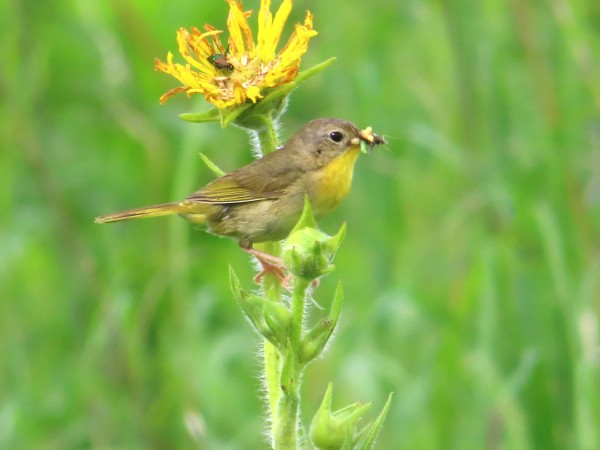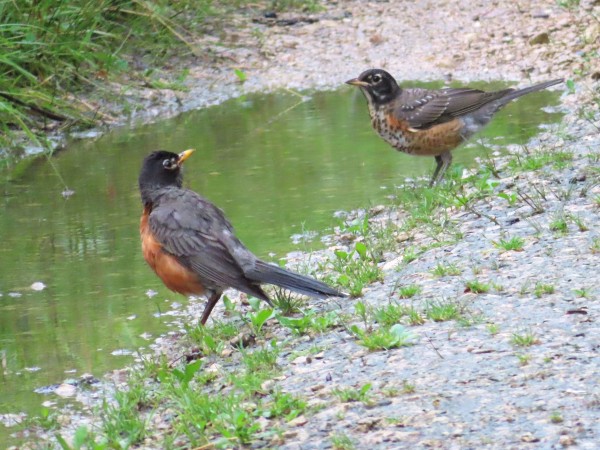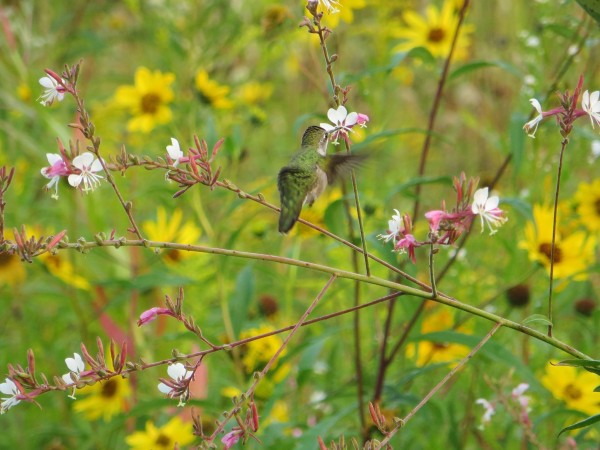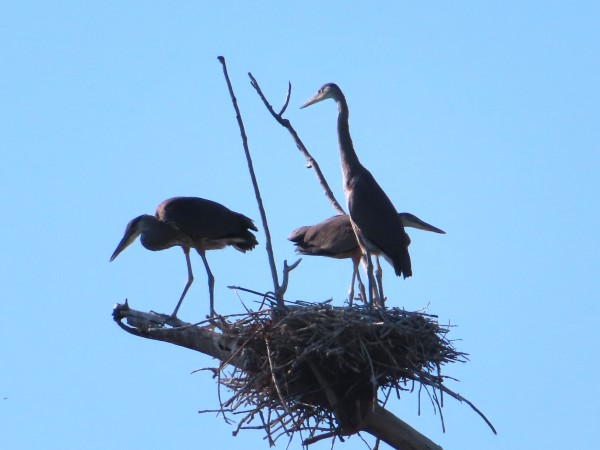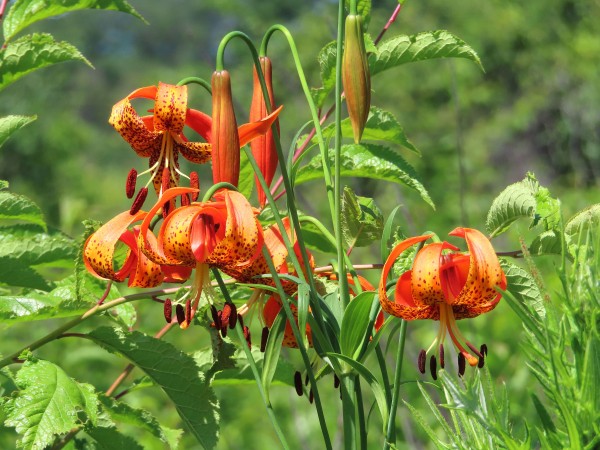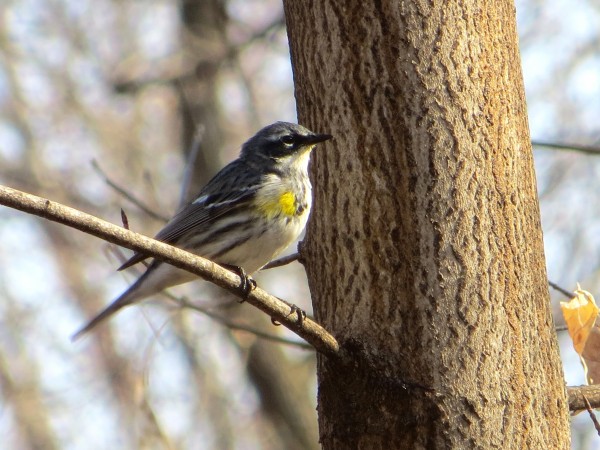Chuck's Birding Report #122
12 July - 18 July 2022
Dear fellow flock of birders,
What were the birds up to this past week in the Arboretum?
The most interesting bird observation I had occurred on my bird walk in the Arb on Sunday morning. Right after I arrived at the Arb I initially made my regular walk along the band of prairie that separates the north and south parts of the Visitor Center parking lot. I saw my usual feathered friends: pairs of American Goldfinches chasing each other, talkative Gray Catbirds (at least one is often perched in the small snag right where I park my car), lots of Barn Swallows catching insects as they fly low over the mown grass south of the parking lot and several American Robins and Northern Cardinals singing from nearby trees as part of the dawn chorus. I next crossed to the southwest corner of the parking lot and took the narrow path which passes through the council ring and down to a wide, east/west trail. I turned right and walked west. The trail is between Curtis Prairie to the south and McCaffrey Drive to the north. That trail is initially lined with live oak trees primarily but also a few snags especially on its south side. I often stop to look for birds in the snags. Birds are so much easier to see and identify in these leafless snags. It was there that I saw a Red-headed Woodpecker perched near the top of a snag. Any day I see a Red-headed Woodpecker in the Arb is really special just by itself. But what it did next was a complete surprise to me. It flew from its perch and made some amazingly acrobatic dips, dives and swirls to catch what I assume was an insect. It performed these moves just as adeptly as a flycatcher or a warbler would. Maybe others have seen this before but I had never seen a Red-headed Woodpecker behave this way. I don’t see them often but when I do they are usually just clinging to the bark of a tree. I stood and watched, as well as tried to photograph this mesmerizing activity for at least a half hour. Through my binoculars I could see some insects flying around in the air near the snags. In addition there was another behavior that really made me chuckle. Yes, Chuck chuckled. Each time the Red-headed Woodpecker would leave its perch to capture an insect a rather small bird would chase the woodpecker. When the woodpecker perched again the small bird would perch nearby. This activity repeated itself again and again. I tried to identify the small bird when it was perched and it looked like it was either a Willow Flycatcher or an Eastern Wood Pewee. Okay, why was it chasing the Red-headed Woodpecker? Maybe the flycatcher thought the woodpecker was stealing its food so wanted to chase the woodpecker away. Or maybe the flycatcher thought the woodpecker was stealing its show, saying to itself, that is what I do, not what you do! I’m sure there could be many other reasons. I did read in one article that Red-headed Woodpeckers are especially good at catching flies. Lastly, I saw a Common Grackle and a couple Red-winged Blackbirds make some similar flycatcher moves to capture insects too.
In this same area I found several Common Yellowthroats moving about in the numerous Joe Pye Weed plants on both sides of the trail. I saw both males and females. They both have bright yellow throats but only the males have the black masks. A photo of one is included. The female that really caught my eye was one carrying food in its beak. The food looked like a green inch worm and an insect with legs. I’m not sure what the yellow thing is but I’m sure the nestlings or fledglings being fed will enjoy it all. A photo of that female is included.
Today I went to the same area where I saw the Red-headed Woodpecker acting like a flycatcher and capturing insects. The woodpecker was not there today. Instead I saw Wild Turkeys perched in one of the snags. No, they were not acting like acrobatic flycatchers and trying to catch insects in the air. They had probably spent the night perched high in the snag safe from any predators. Most were already standing on a branch but I did see a couple squatting down so their bellies were touching the branch that they were perched on. When the turkeys stand they use their leg muscles to wrap their toes around the branches to secure their position. But when they squat down and flex their leg joints the toes secure their position passively so there is no muscle contraction in the down position in the tree. They can sleep in the trees this way without falling off the branch they are perched on. Included is a Wild Turkey perched on a branch in the down position with leg joints flexed and the belly touching the branch that it is perched on.
Some of the American Robins who have been in nests for some time now are beginning to leave the nest or fledge. You can tell the fledglings by the color pattern on their breasts. They have black spots on light orange breasts. This shows that robins are in the thrush family and are spotted at least when young like thrushes. I’m just beginning to see a few of these fledglings. They often hang out with their parents who continue to feed them a little but the parents are also teaching them how to find food for themselves. The included photo shows an adult American Robin with a solid orange breast and belly along with a fledgling who has a spotted breast and belly. Maybe the adult is about to teach the younger robin how to take a bath in the nearby puddle.
The next photo was contributed by Rosemary Jones. She saw an Eastern Kingbird catch a butterfly. It then flew to a branch and started wacking the butterfly on the branch to try to dislodge the wings. Since the kingbird was probably trying to feed either nestlings or fledglings the wings of the butterfly just get in the way and are probably not that nutritious. I’ve seen other birds who when they catch butterflies try to remove their wings. I saw an Eastern Phoebe do this about a week ago. Thank you Rosemary for sharing your photo with our birders.
I often see Ruby-throated Hummingbirds perched at the top of medium sized snags. They are easy to photograph when perched in these snags. They can sit still for several minutes. What’s more fun is to watch hummingbirds nectaring on flowers. They move from flower to flower quite quickly so they are very hard to photograph. Included is a photo of a Ruby-throated Hummingbird nectaring on Gaura, a delicately flowered plant with white and pink petals that is just beginning to bloom now.
Yesterday when I first arrived at the Arb and stepped out of my car I saw a male Northern Cardinal land on a tall plant with terminal clusters of small, white blooms. The plant is called Pale Indian Plantain. I quickly grabbed my camera and caught the included photo just before the cardinal flew away. It was a lucky shot.
Today I walked along Arboretum Drive down to the Heron Rookery, composed of just three nests, to see how the Great Blue Heron nestlings were doing and also to the Osprey nest to see how the three nestlings were doing. The middle heron nest has three nestlings. A photo of that nest and its three nestlings is included. The other two nests have one nestling each. When I walked to the Osprey nest I did not see the nestling but did see the two adults.
Since there are so many wildflowers in bloom right now I thought I should include a photo of at least one. It was a hard choice but I chose the Michigan Lily. Those orange petals with multiple spots and those pollen laden anthers grabbed my attention so that is what is included.
That’s the Arboretum bird et al report for the past week. I wish you all good health and good birding too,
Chuck

